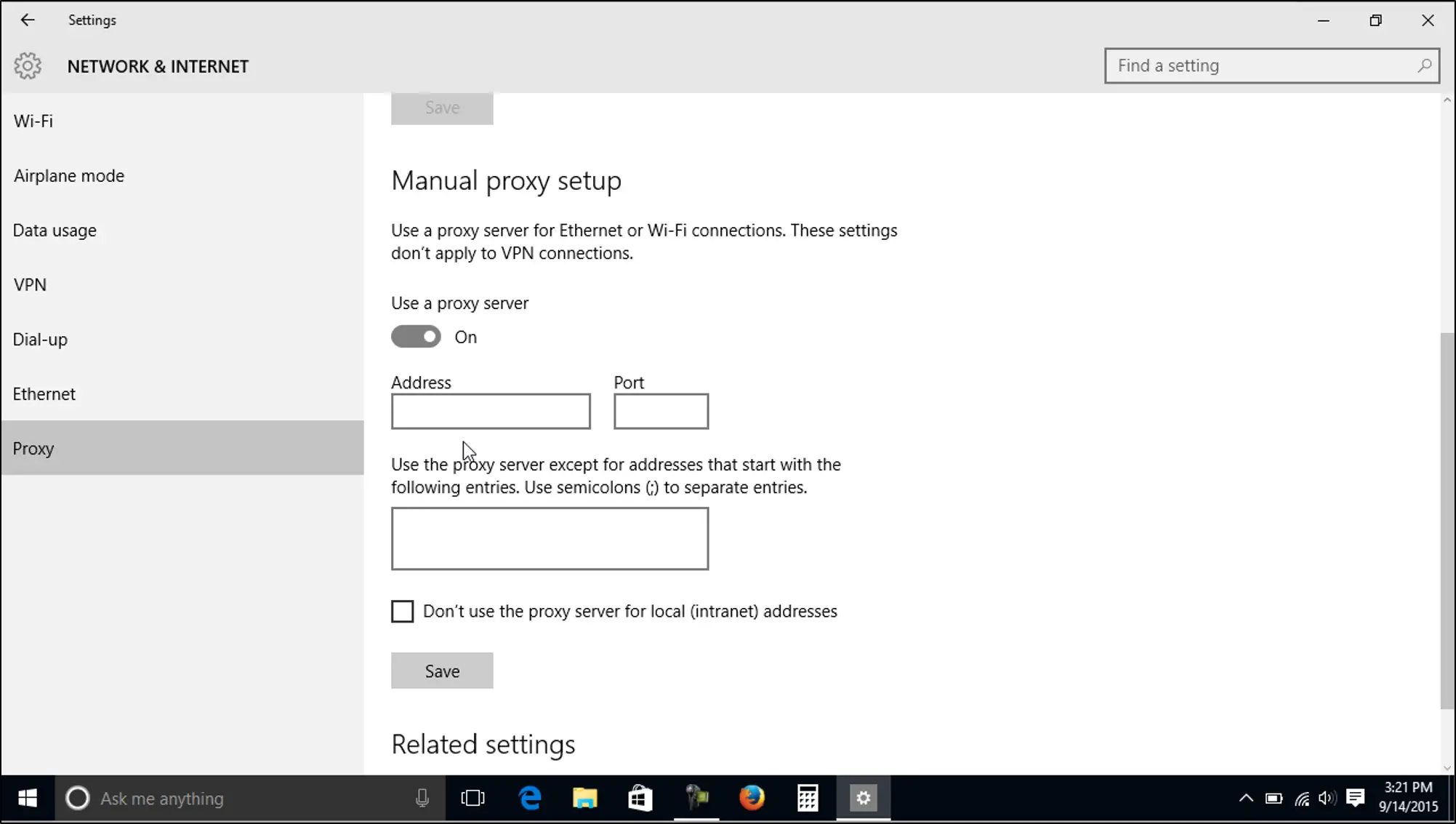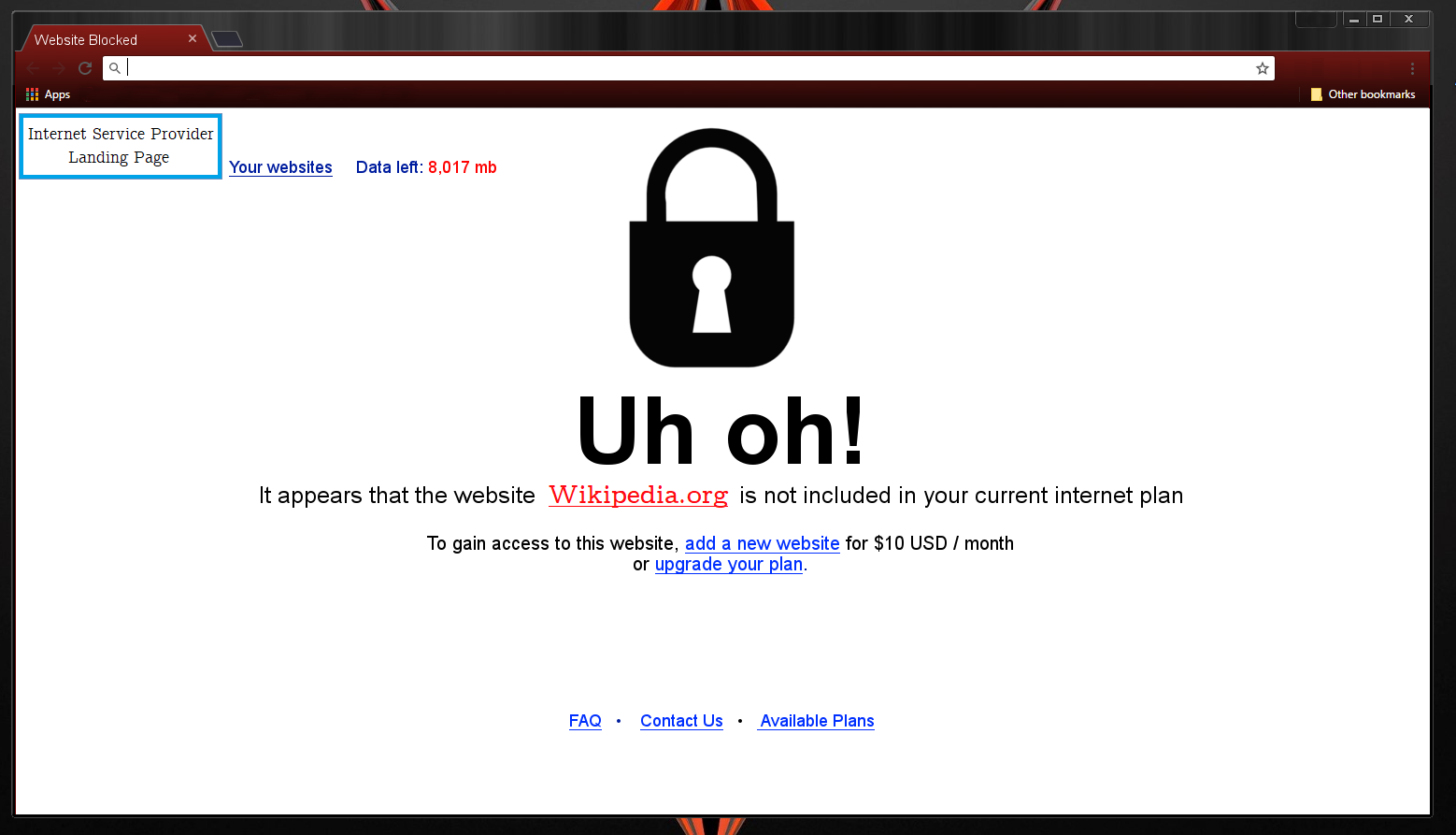Introduction
A proxy server is an intermediary server that acts as a gateway between your computer and the internet. It facilitates communication between your device and websites, allowing you to browse the internet anonymously or access content that may be restricted in your region.
Proxy servers have become increasingly popular due to their ability to add an extra layer of privacy and security to your online activities. By routing your internet connection through a proxy server, your browsing history, IP address, and personal information can be shielded from prying eyes.
In addition to providing anonymity, proxy servers offer other benefits as well. They can enhance browsing speed by caching frequently accessed web pages and files, reducing the load on your internet connection. Proxy servers can also help bypass network restrictions imposed by schools, workplaces, or governments, allowing you to access blocked websites and services.
There are various types of proxy servers available, each with its own features and functionality. From public proxies that are freely accessible to private proxies that provide more control and privacy, you can choose the type that best suits your needs.
In this article, we will explore how to use a proxy server, including finding a proxy server, configuring your browser to use one, and utilizing it for web browsing and other applications. We will also discuss any potential security risks associated with proxy server usage.
So, if you’re ready to learn how to harness the power of a proxy server and take control of your online experience, let’s dive in!
What is a proxy server?
A proxy server acts as an intermediary between your device and the internet. When you send a request to access a website or other online resource, it first goes through the proxy server, which then sends the request on your behalf to the desired destination. The response from the destination is then sent back to the proxy server, which in turn forwards it to your device.
One of the key purposes of a proxy server is to provide anonymity for your internet activities. When you connect to the internet through a proxy server, your IP address is masked, making it difficult for websites to track your actual location. This can be beneficial if you want to maintain privacy and protect your personal information.
Proxy servers also enable you to bypass geographic restrictions or internet censorship. If a website or service is blocked in your region, you can use a proxy server located in a different country to access the content. This is possible because the proxy server acts as a middleman, making it appear as if your request is originating from its location.
There are different types of proxy servers, each with its own unique features and functionalities. Forward proxies, for example, are commonly used to access the internet anonymously. They can be either public or private and are typically used by individuals who want to protect their online privacy.
Reverse proxies, on the other hand, are used by websites and online services to improve performance and security. They sit between the users and the server, acting as a shield to filter and distribute incoming requests. Reverse proxies are often employed to handle high web traffic and provide an additional layer of security by masking the server’s IP address.
A transparent proxy is another type that does not modify or hide your IP address. Instead, it simply forwards your request to the destination, making it useful in certain scenarios such as caching or content filtering.
Overall, a proxy server serves as a valuable tool in enhancing privacy, accessing restricted content, and improving performance. By understanding the different types and functionalities of proxy servers, you can leverage them to meet your specific needs.
Why would I use a proxy server?
There are several reasons why you might consider using a proxy server for your internet browsing. Let’s explore some of the key benefits:
1. Anonymity: One of the primary reasons to use a proxy server is to maintain anonymity online. By routing your internet traffic through a proxy server, your IP address and browsing activities are hidden from websites and online services. This helps to protect your privacy and prevent your personal information from being tracked or collected.
2. Access blocked content: Proxy servers allow you to bypass geographic restrictions and censorship imposed by governments, schools, workplaces, or internet service providers. By connecting to a proxy server located in a different region, you can access websites, streaming services, or online content that may be restricted in your location. This can be especially useful if you are traveling or living in a country with strict internet regulations.
3. Enhanced security: Proxy servers can add an extra layer of security to your internet connection. They act as a barrier between your device and the internet, filtering incoming and outgoing traffic. This can help protect against malicious attacks, such as DDoS (Distributed Denial of Service) attacks, and prevent direct access to your IP address, making it more difficult for hackers to target your device.
4. Improved performance: Some proxy servers utilize caching mechanisms to store frequently accessed web pages and files. This means that when you request a webpage, the proxy server can serve it to you directly from its cache instead of fetching it from the original website. This can result in faster loading times and reduced bandwidth usage, especially when accessing popular websites or resources.
5. Content filtering: In certain environments, such as schools or workplaces, network administrators may implement content filtering to restrict access to specific websites or types of content. By using a proxy server, you may be able to bypass these restrictions and gain access to blocked websites or services. However, it’s important to note that circumventing content filtering may violate the policies set by the network administrator and could have consequences.
Overall, using a proxy server offers a range of advantages, from maintaining privacy and accessing blocked content to enhancing security and improving browsing performance. By carefully considering your needs and selecting the right proxy server, you can enjoy a safer and more flexible internet experience.
Types of proxy servers
There are various types of proxy servers available, each designed to cater to different needs and provide specific functionalities. Let’s take a closer look at some of the most common types:
1. Forward Proxy: Forward proxies, also known as open proxies or public proxies, are widely accessible to the general public. These proxy servers act as intermediaries between your device and the internet, allowing you to browse the web anonymously. Forward proxies can help hide your IP address and encrypt your internet traffic, providing an added layer of privacy and security.
2. Reverse Proxy: Reverse proxies are positioned on the server side and act as intermediaries between users and web servers. They help improve performance and security by distributing incoming requests among multiple servers, reducing the workload on each server and minimizing response time. Reverse proxies also provide an additional layer of security by shielding the actual web server’s IP address, making it harder for attackers to target directly.
3. Transparent Proxy: Transparent proxies, as the name suggests, do not modify or hide your IP address. They act as intermediaries in the communication between your device and the destination server, but without adding any additional layers of privacy or security. Transparent proxies are often used for caching purposes, allowing frequent requests for the same content to be served directly from the cache, improving overall performance.
4. High Anonymity Proxy: High anonymity proxies, also known as elite or fully anonymous proxies, provide the highest level of anonymity. They do not reveal your IP address, making it difficult for websites and online services to track your location. High anonymity proxies ensure that your online activities remain private and protected.
5. Dedicated Proxy: Dedicated proxies are private proxy servers exclusively reserved for a single user. They offer a higher level of security and performance compared to public proxies. Dedicated proxies are often used by businesses, marketing professionals, or individuals who require dedicated internet connectivity and stronger privacy assurance.
6. Residential Proxy: Residential proxies route your internet traffic through real residential IP addresses. They mimic the IP addresses of regular home internet users, making them appear more legitimate and harder to detect compared to data center proxies. Residential proxies are often used for web scraping, ad verification, and bypassing geo-restrictions.
These are just a few examples of the types of proxy servers available. Each type offers different levels of anonymity, security, and performance. When choosing a proxy server, consider your specific requirements and opt for the one that best fits your needs.
How do I find a proxy server?
There are several ways to find a proxy server that meets your needs. Here are some methods you can use:
1. Proxy websites: Many websites offer lists of proxy servers that you can use for free. These websites typically provide details such as the server’s IP address, port number, and location. You can choose a proxy server from the list and configure your browser or application to use it.
2. Proxy server software: There are various software applications available that allow you to set up your own proxy server. This option is more technically involved but gives you more control and customization options. You can choose to install and configure proxy server software on your own server or even on a personal computer.
3. VPN services: Many Virtual Private Network (VPN) services offer built-in proxy server functionality. When you connect to a VPN, you can often choose to route your internet traffic through a proxy server. This combination provides both the security and privacy benefits of a VPN alongside the anonymity and bypassing capabilities of a proxy server.
4. Paid proxy providers: There are companies that specialize in providing proxy server solutions. These paid services offer dedicated proxy servers with various features and options. By subscribing to a paid proxy provider, you can have access to a reliable and high-performance proxy server with additional support and customization options.
5. Online forums and communities: Online forums and communities focused on internet privacy and security can be good places to find recommendations and discussions about proxy servers. Members often share their experiences and suggest reliable proxy server providers or configurations.
6. Browser extensions: Some web browsers offer extensions or add-ons that allow you to easily switch between proxy servers. These extensions can simplify the process of finding and using a proxy server, making it more accessible for users without technical expertise.
When choosing a proxy server, it’s important to consider factors such as server location, speed, and the level of privacy offered. Additionally, free proxy servers may have limitations in terms of stability and reliability, so it can be worth investing in a paid service for improved performance and support.
Remember to always verify the credibility and reliability of the proxy server, as using an unreliable or malicious server can compromise your privacy and security. Take the time to research and choose a reputable source for your proxy server needs.
How do I configure my browser to use a proxy server?
Configuring your browser to use a proxy server is a straightforward process. The steps may vary slightly depending on the browser you are using, but the general principles remain the same. Here’s a general guide on how to configure your browser to use a proxy server:
1. Open browser settings: Start by opening the settings or options menu in your browser. The location of this menu may vary, but it is typically found in the top-right corner of the browser window or in the main menu.
2. Locate network settings: Look for the network or connections section in the settings menu. In some browsers, this may be referred to as “Internet Options” or “Network Preferences.”
3. Go to proxy settings: Within the network or connections section, you should find an option for proxy settings. Click on it to access the proxy configuration settings.
4. Choose manual proxy setup: Once you are in the proxy settings, you will typically have the option to choose manual configuration or automatic detection. Select the manual or custom configuration option.
5. Enter proxy server details: In the manual configuration section, you will need to enter the details of the proxy server you want to use. This includes the IP address or domain name of the proxy server and the port number. You may also need to specify any additional information required by the proxy server, such as authentication credentials.
6. Save and apply: After entering the proxy server details, save the settings and apply the changes. Your browser should now be configured to use the specified proxy server for all internet connections.
It’s important to note that some browsers also offer specific settings for configuring proxy servers for secure connections (HTTPS) and for bypassing the proxy server for certain websites or addresses. Explore the proxy settings menu in your browser to understand the available options and customize them to your preferences.
If you encounter any issues or if the proxy server does not work properly, double-check the accuracy of the proxy server details you entered. Alternatively, you can try using a different proxy server or seek assistance from the proxy server provider.
Remember that configuring your browser to use a proxy server routes all your internet traffic through that server. Ensure that you trust the proxy server and are aware of any potential privacy or security implications before proceeding.
How do I use a proxy server for web browsing?
Using a proxy server for web browsing is a simple process once you have configured your browser to utilize the proxy server. Here’s a step-by-step guide on how to use a proxy server for web browsing:
1. Configure your browser: Follow the instructions mentioned earlier in this article to configure your browser settings to use a proxy server. Make sure you enter the correct proxy server details, including the IP address or domain name and the port number.
2. Test the connection: After saving the proxy server settings in your browser, test the connection to ensure that the proxy server is properly set up. Open a new browser tab and visit a website to check if the page loads correctly. If the website loads without any issues, the connection to the proxy server is working correctly.
3. Browse the web: Once the proxy server is configured and the connection is tested, you can start browsing the web as you normally would. The proxy server will act as an intermediary, routing your web requests through its IP address and location. This provides anonymity and can help you access geo-restricted or blocked content.
4. Monitor proxy server activity: Some proxy servers provide a dashboard or interface that allows you to monitor the activity and performance of the proxy server. This can include details such as bandwidth usage, connection speeds, and IP address information. Familiarize yourself with the proxy server’s interface to keep track of your browsing activity.
5. Verify IP address and location: To ensure that your web browsing is being routed through the proxy server, you can check your IP address and location. There are various websites and tools available that can display your current IP address and approximate location. Compare this information with the IP address and location of the proxy server to confirm that the proxy server is functioning correctly.
6. Adjust proxy server settings (optional): Depending on your needs, you may want to adjust the proxy server settings. Some proxy servers offer additional features such as encryption, ad blocking, or cookie management. Explore the proxy server settings or contact the provider to learn more about these advanced options and how to configure them.
By following these steps, you can effectively use a proxy server for web browsing. Remember to choose a reliable and reputable proxy server and be mindful of any potential privacy or security implications. Additionally, keep in mind that proxy servers can introduce some latency or decrease in browsing speed due to the additional routing process involved.
How do I use a proxy server for other applications?
In addition to web browsing, you can also use a proxy server for other applications on your computer or mobile device. Here’s a step-by-step guide on how to use a proxy server for other applications:
1. Determine application compatibility: First, determine if the application you want to use supports proxy server settings. Not all applications have built-in functionality to connect through a proxy server. Check the application’s settings or documentation to see if there is an option to configure proxy server settings.
2. Obtain proxy server details: Just like with web browsing, you will need the necessary details of the proxy server you want to use. This includes the IP address or domain name of the proxy server and the port number. You may also need to provide any additional information, such as authentication credentials, if required.
3. Configure proxy server settings: Locate the settings or preferences section of the application and look for the proxy server configuration options. Enter the proxy server details, including the IP address or domain name and the port number. Save the settings.
4. Test the connection: Once the proxy server settings are saved, it’s important to test the connection to ensure that the application can successfully connect through the proxy server. Use the application as you normally would and verify that it functions correctly and has access to the necessary resources.
5. Adjust proxy server settings (optional): Depending on the application, there may be additional proxy server settings that you can configure. Explore the application’s settings or documentation to learn more about these advanced options, such as encryption settings or proxy server authentication methods.
6. Monitor application activity: Some applications may provide logs or activity monitors that allow you to view the connection and activity through the proxy server. Use these tools to monitor the application’s proxy server usage and troubleshoot any issues that may arise.
Remember that not all applications support the use of proxy servers. It’s important to check the application’s documentation or contact the developer to confirm if proxy server settings are available. Additionally, keep in mind that the proxy server performance may vary for different applications, so it’s recommended to test the connection and monitor the application’s behavior to ensure smooth operation.
By following these steps, you can configure and use a proxy server for other applications, allowing you to extend the benefits of anonymity, access control, and security beyond just web browsing.
Are there any security risks with using a proxy server?
While using a proxy server can provide various benefits, it’s important to be aware of potential security risks that may arise. Here are some considerations regarding the security risks associated with using a proxy server:
1. Trustworthiness of the proxy server: When using a proxy server, you are essentially routing your internet traffic through a middleman. It’s crucial to ensure that the proxy server you are using is trustworthy and reputable. Using an unsecured or malicious proxy server can expose your data and potentially compromise your privacy and security.
2. Logging and data collection: Some proxy servers may log your internet activity, including the websites you visit and the data you transmit. This information can potentially be used to track your online behavior or compromise your privacy. It’s important to review the privacy policy and terms of use of the proxy server provider to understand their data practices and ensure they align with your privacy requirements.
3. Man-in-the-middle attacks: In certain cases, a malicious proxy server can act as a “man-in-the-middle,” intercepting and modifying your internet traffic. This can enable the proxy server to access sensitive information, such as passwords or personal data. To mitigate this risk, opt for reputable proxy server providers and ensure that your connections to websites are secured through HTTPS protocols.
4. Injection of malware or ads: Some proxy servers may inject unwanted malware or advertisements into websites you visit. This can significantly impact your browsing experience and expose your device to potential security risks. Be cautious when using free or unverified proxy servers. Consider using ad-blockers or browser extensions that can help protect against unwanted injected content.
5. Proxy server provider security: The security measures implemented by the proxy server provider can directly impact your security. It’s important to ensure that the provider follows industry best practices, such as encryption protocols and regular security audits, to safeguard your data and protect against potential vulnerabilities.
6. Risks associated with forwarding sensitive data: If you need to transmit sensitive information, such as login credentials or financial details, through a proxy server, there is a risk that this data can be intercepted or compromised. It’s recommended to avoid forwarding sensitive information through a proxy server, especially if the origin or destination of the data is not under your control.
By understanding these security risks and taking appropriate precautions, such as using reputable proxy server providers and securing your connections, you can mitigate the potential security vulnerabilities associated with using a proxy server. It’s crucial to evaluate the trade-offs between the benefits and risks, and use proxy servers judiciously based on your specific needs and the sensitivity of the information you handle.
Conclusion
Proxy servers offer a range of benefits and can greatly enhance your online experience. Whether you are looking to maintain anonymity, access restricted content, improve browsing speed, or enhance security, a proxy server can be a valuable tool.
By routing your internet traffic through a proxy server, you can mask your IP address, bypass geographic restrictions, and protect your privacy. Proxy servers can be configured for web browsing and can also be used with other applications, depending on their compatibility.
However, it is important to be aware of potential security risks associated with using a proxy server. Trustworthiness of the proxy server, logging and data collection practices, and the possibility of man-in-the-middle attacks should be considered when choosing a proxy server provider. It is crucial to opt for reputable providers and make informed decisions about the security of your data.
In conclusion, proxy servers provide a flexible and effective means of enhancing privacy, accessing restricted content, and improving security in your online activities. With careful consideration of the risks and benefits, you can leverage the power of proxy servers to have a safer and more versatile internet experience.

























